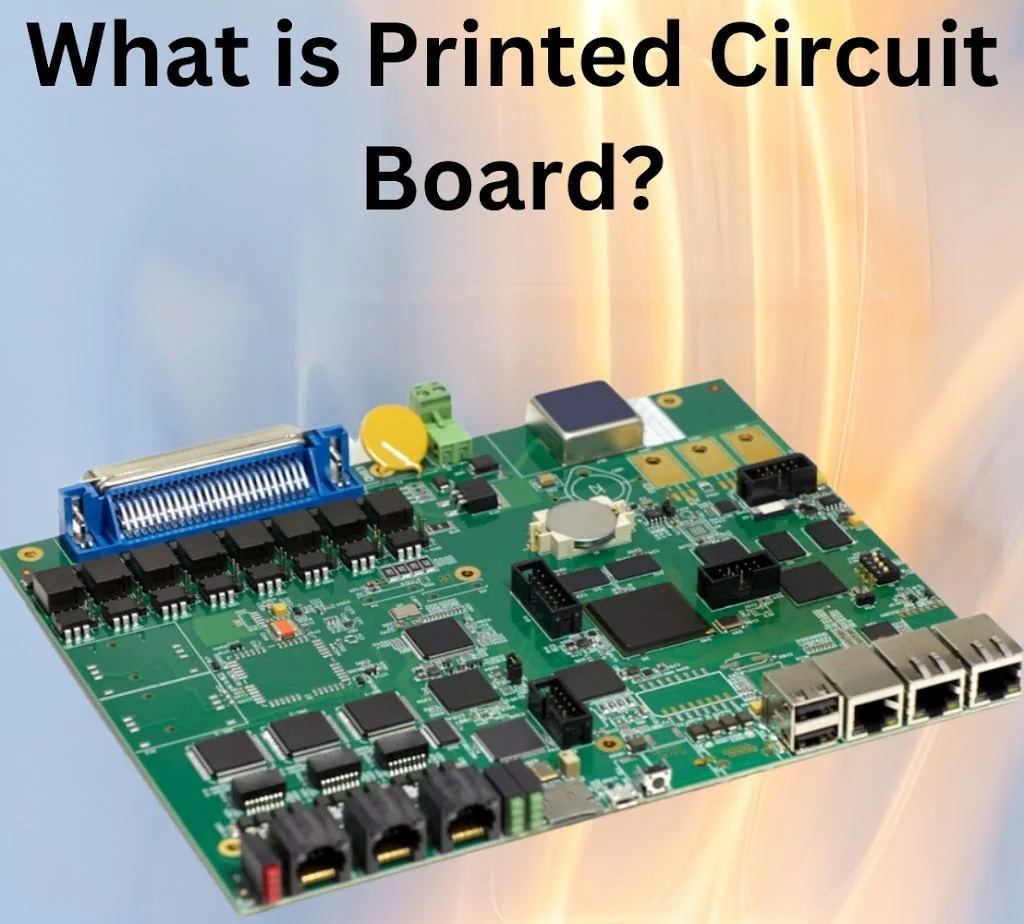Introduction
Printed Circuit Boards (PCBs) are vital in modern electronics, connecting components in devices like smartphones, computers, and industrial systems. This article explores their creation, types, design, manufacturing, and applications across industries.
Understanding Printed Circuit Boards (PCB)
Manufacturers make PCBs from non-conductive materials like fiberglass, then print copper pathways to form electrical connections. These link components such as resistors, capacitors, ICs, and connectors directly on the board.
Components of a PCB
Substrate Material
The PCB’s main material provides mechanical support and insulation. Common substrates include fiberglass (FR-4), ceramic, and flexible materials like polyimide for flexible PCBs.
Conductive Traces
Engineers use copper tracks on PCBs to connect components and carry electrical signals throughout the circuit.
Pads and Vias
Designers make pads on PCBs to mount or solder components and use vias (plated holes) to connect signals between layers.
Silk screen
Manufacturers apply the silkscreen layer with labels, markings, and outlines to aid in component identification, assembly, and testing.
Solder Mask
Engineers apply a protective coating to prevent short circuits and corrosion on copper lines and pads during soldering.
Kinds of Printed Circuit Board (PCB)
PCB come in various types and configurations to suit different applications and design requirements:
Single-Sided PCB
Manufacturers print copper traces on one side of the board, using single-sided PCBs mainly for simple electronics with few components.
Double-Sided PCB
Copper through-hole connections appear on both sides of the PCB and connect through vias. Multilayer PCBs build on this double-sided design, offering greater routing flexibility for complex circuits.
Multi-Layer PCB
The substrate forms the PCB base, with conductive traces layered on it. This structure allows higher component density, smaller size, and better signal quality—perfect for advanced devices like smartphones and computers.
Rigid, Flexible, and Rigid-Flex PCB
Rigid PCBs are fixed, flexible PCBs bend, and rigid-flex PCBs combine both.
Design Considerations for PCB
Designing a PCB involves several key considerations to ensure optimal performance, reliability, and manufacturability:
- Component Placement: Arrange components to prevent signal interference, boost signal strength, and speed up assembly and testing.
- Trace Routing: In high-speed and RF PCBs, traces must be carefully designed to maintain signal integrity, prevent cross-talk, and meet impedance requirements.
- Power and Ground Planes: Unified power and reference planes ensure even voltage distribution, reduce noise, and improve electromagnetic compatibility (EMC).
- Thermal Management: Ensuring effectiveness in heat dissipation through thermal vias, heat sinks, and devoted component placement to mitigate the risk of overheating and be able to endure long-term reliability.
Production of the PCB
The manufacturing of PCB involves several steps, including:
- Design and Layout: Embellishing the workflow with the PCB design software, building the schematic, laying out the traces, and routing, minding the element of the distortion of signal, components placement, and thermal management.
- Prototyping: Iterative production of a prototype printed circuit board with a few rapid prototyping techniques like CNC milling or 3D printing approaching the required optimized design.
- PCB Fabrication: These processes involve etching, which removes unwanted copper to form the traces, and drilling, which creates holes for mounting components and vias.
- Component Assembly: For the PCB assembly SMT (Surface Mount Technology) or through-hole assembly techniques are adopted to solder components on the PCB followed by checking and the quality check to ensure the functioning.
- Final Testing and Quality Control: PCB are subjected to stringent testing measures such as electrical testing, testing of functionality, and of inspection for errors in order to match the desired performance levels and reliability standards.
Applications of PCB
PCBs are integral to a wide range of industries and applications, including:
- Consumer Electronics: PCBs provide the essential electrical connectivity in smartphones, laptops, TVs, and home appliances, enabling the functionality of modern devices.
- Automotive Electronics: In cars, they govern functions such as engine management, infotainment systems, safety systems and EV components.
- Industrial Automation: The PCB are indispensable components in control systems devices, PLC (Programmable Logic Controllers), robotic process automation and sensor interfacing used in industrial machinery and automation.
- Aerospace and Defense: Engineers use PCBs in avionics systems, radar, satellites, communication equipment, and military electronics to ensure high performance and reliability.
- Medical Devices: PCB are essential to medical imaging, various monitoring devices, implantable devices, and diagnostic instruments which contribute to the innovations in healthcare technologies.
The future of PCB technology is marked by several trends and innovations
- Miniaturization: Further miniaturization of components and PCB to follow the trend of smaller and more convenient digital items.
- High-Frequency and RF PCB: The proliferation of high frequency and RF PCB in various applications such as, wireless communication, Internet of Things (IoT) devices, and 5G network infrastructures.
- Advanced Materials: Utilizing new-generation materials, such as flexible substrates, high-temperature laminates, and conductive inks for the sake of performance and reliability.
- Embedded Components: Integration of passive and active components right into the PCB substrate for the size reduction, enhanced signal quality and minimized assembly.
Conclusion
PCBs are essential for modern electronics, and advances in their design will enable smaller, faster, and more efficient devices.
